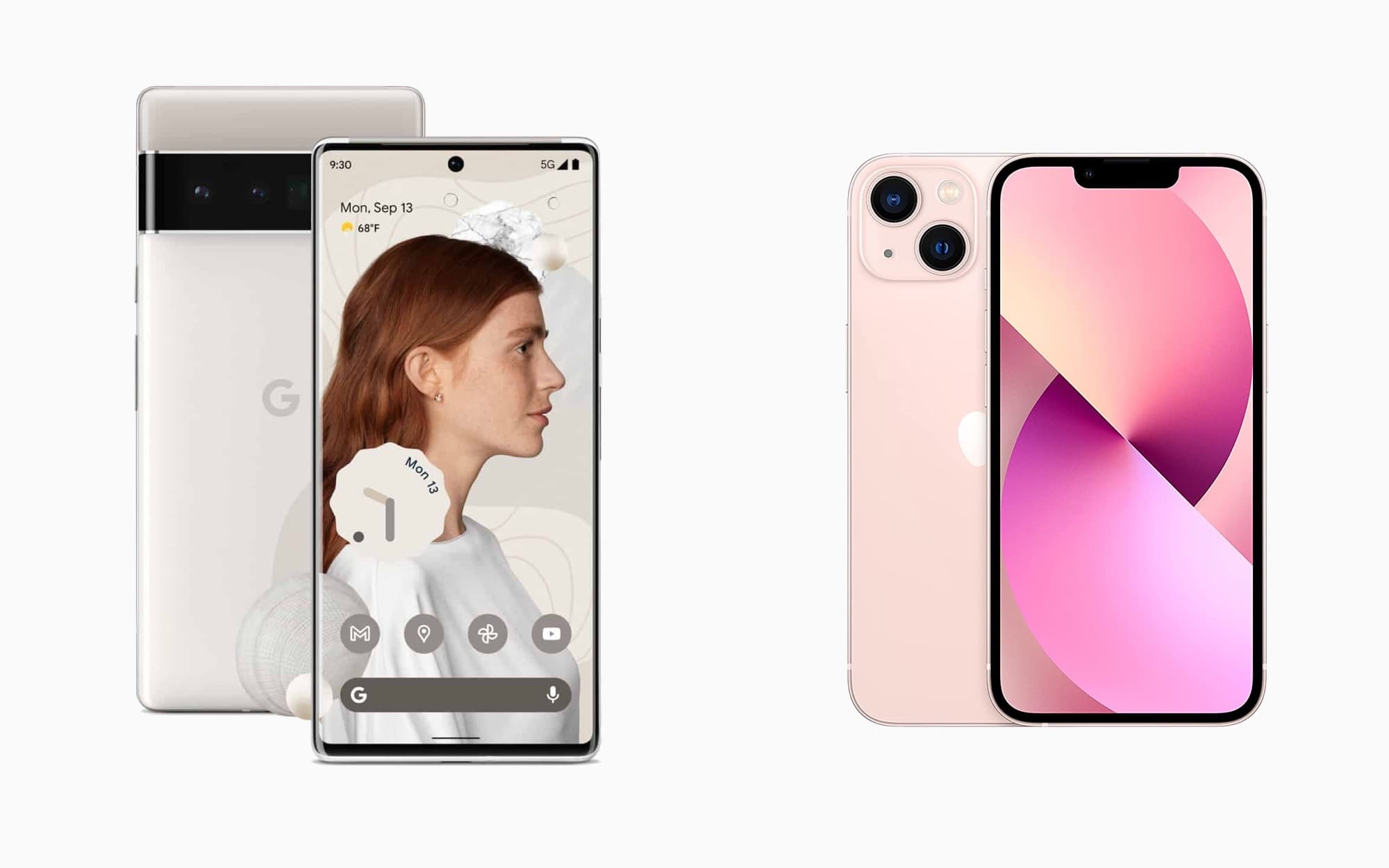These are always the two phones I'm considering — the latest Apple iPhone or the latest Google Pixel phone. There are many good Android phones, but if I'm going Android, I prefer the Google ones for the easier customer support.
Right now I have a Google Pixel 5. My partner has an iPhone 11. The latest phones are a Google Pixel 6 and an Apple iPhone 13. I try to keep up to date between them...
The latest phones are always similar in many ways. They have great screens and run quickly. But there are a bunch of features that are unique to each, and I think it's worth keeping an updated list to help me choose — sometimes I forget something that I later remember is important to me.
Here's the updated list comparing the 2021 Google Pixel 6 Pro and the Apple iPhone 13 Pro.
Features unique to the Google Pixel — 2021
- No cutout in the display. Pixels have had just a little dot for years. I really don't like the Apple phone cutout.
- Astrophotography from the phone. I don't know when I'll use it, but it's awesome to think about.
- Unlimited storage on Google Photos in "high" resolution (though not native). This is no longer available from the Google Pixel 6.
- Fingerprint sensor on the back. (But no face recognition.) A bit annoying when my finger is wet, e.g. when eating.
- Google Photos lets you cut out unwanted background things.
- Can use any browser (and it's not just skinned Safari) — I use Brave and Chrome
- Easy to use "Find my phone" — just Google "Where is my phone?". Magical experience, very easy to use.
- Google Maps shows a speedometer. I always use Google Maps, so this is useful to me.
- I can record videos with sound from the Bluetooth headphones. Oddly, you can't do this with an iPhone, even when using Airpods.
- Can block ads using VPNs
- Better other-language dictation (voice-to-text), including in Chinese and Arabic, which I both use regularly.
- File management — I can find files I've downloaded and do things with them.
- Night photography — I don't really use this, but Google photos always come out better when taking photos with high contrast, or at night time.
- USB-C charging/headphone port. Just one charger when I travel!
- Always-on display — really useful for checking the time, or finding my phone in the dark.
- Easy access to the camera via double tap of the power button. It's not "hard" on the iPhone mind you.
- Side-loadable apps — sometimes I have to install a custom app or one not available in my country
- Better notification tray — you can do a lot more from it.
- Cheaper! Equivalent iPhones are 30-50% more expensive. Top spec iPhone 13 Pro Max (512GB to be comparable) is A$2369, and the top spec Google Pixel Pro is $1599. Bottom spec Pixel 6 (128GB) is A$999, and bottom-spec Apple iPhone 13 (non-mini, 128GB) is $1349.
Features unique to Apple iPhone 13
- Adblock in Safari, the core browser. I don't really like Safari, but it runs fast on iPhones, so it's nice to be able to block ads in it.
- Facetime and Messages (though I mostly use Signal). I don't like SMS being the default. Most of my family have iPhones. I actually have an older iPhone to keep using this with them.
- Face recognition. Yes, the iPhones lack a fingerprint sensor, but they have this awesome feature.
- Better battery life. Apple iPhones have lasted longer than their Google counterparts for a long time.
- Many more accessories available for iPhones — screen protectors, cases, etc. Whether online or in stores, 70% of the offerings are for Apple phones, and 30% are "other", of which Google phones are a fraction.
- Apple AirPods work better. You get 3D sound and they seem to remain connected more reliably. I also like it how it auto-transitions between my computer (an Apple one) and the iPhone. (I haven't tried AirPods alternatives, because that's an expensive experiment. I might when my AirPods totally fail and they're out of warranty.)
- Works with the Apple Watch. I don't want one, but that's cool.
- Easier to access customer support — if you have an Apple Store nearby. The Google Pixel return process (mine had a fault) was a bit annoying, as I didn't have the option of going to a store.
- More capacity. There's a 1TB option, whereas the Pixel maxes out at 512GB. But even my 2020 laptop is "only" 512 GB, so this isn't a priority for me.
- Apple iPhones work with an Apple Watch. Though I don't have one.
Features that are similar between the two (or less important to me)
- Photography is excellent on both phones. Usually, photos from my Pixel 5 look better than the iPhone 11, but this kind of thing changes with every generation of phone. Anyway, they're all so amazing these days, and it's 99% up to me to find good subjects, compositions, and lighting.
- They both have all the apps. All the important ones, it seems. Android has a free version of Anki, and iOS has some other ones I've forgotten about.
- Siri and Google Assistant are both similarly useful/annoying, and I don't use either.
- Privacy — Apple makes a lot of noise about privacy, but Google is good at it too. They've both had black marks on their records. I've worked at Google (as a consultant) and know many who've worked at Apple, and they both seem the same inside — they take privacy very seriously, making it quite annoying to work there! (Which is a good thing for end users.)
- Visual design — at this point, all phones look the same.
- Wireless charging — I think they all have it these days...
- Swiping interface — it seems very similar between the phones.
Other considerations/notes
I have always switched between Google and Apple phones. Usually because of cost, but sometimes because of some feature — like a few years ago, Pixel was the phone phone to support Google Fi (now, many do, and also I don't really use it much).
In the past, Google Pixel phones offered unlimited storage in Google Photos (when storing in high resolution, but not original quality). This seems to have ended with the Pixel 5, sadly. So it's no longer an advantage.
Another thing to consider is the pain of switching. On both phones, it takes a few hours. Yes, you can just copy over every app — but I have to log in again with two-factor authentication on both.

